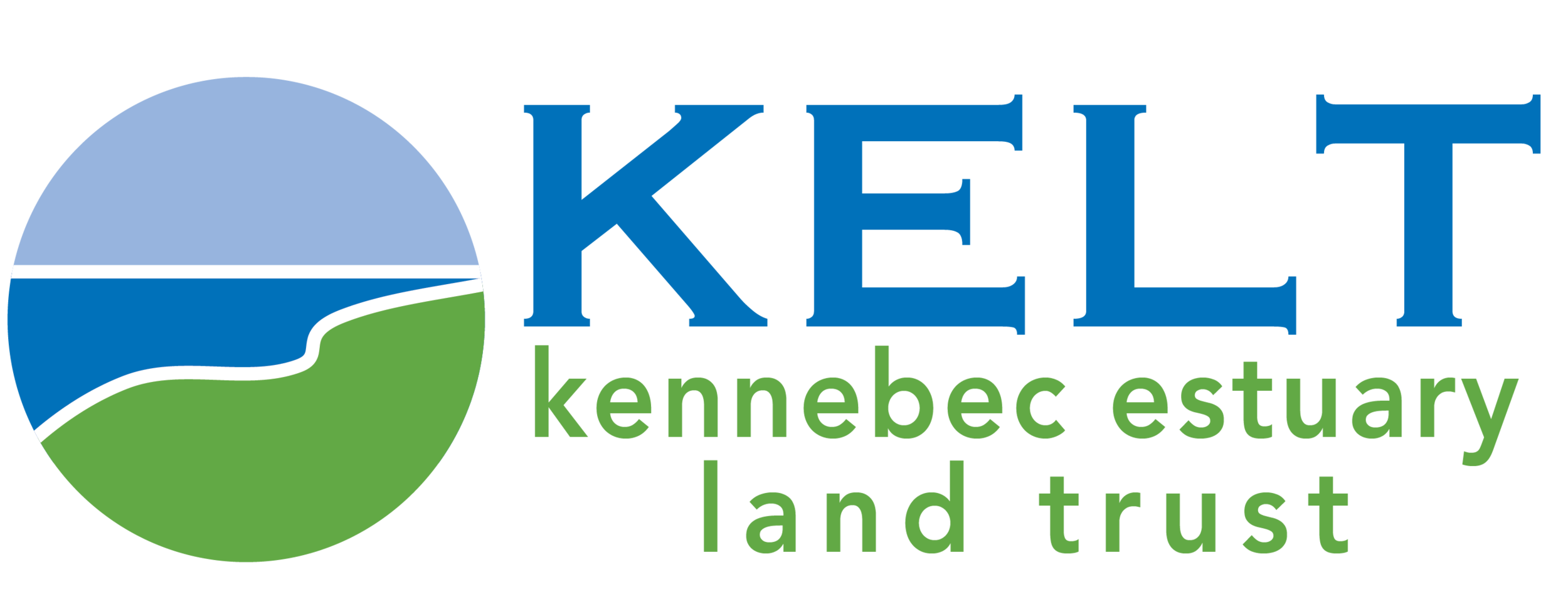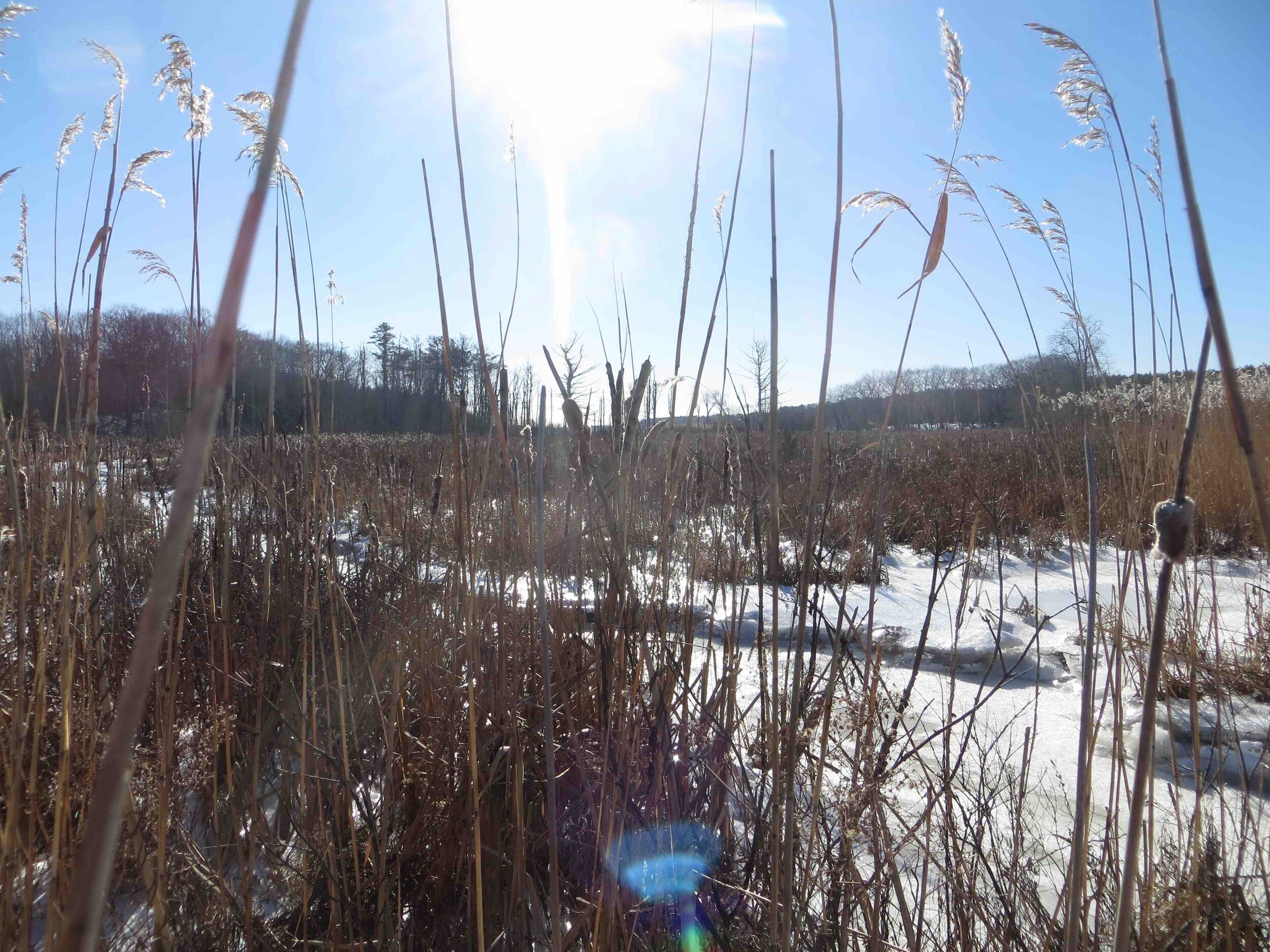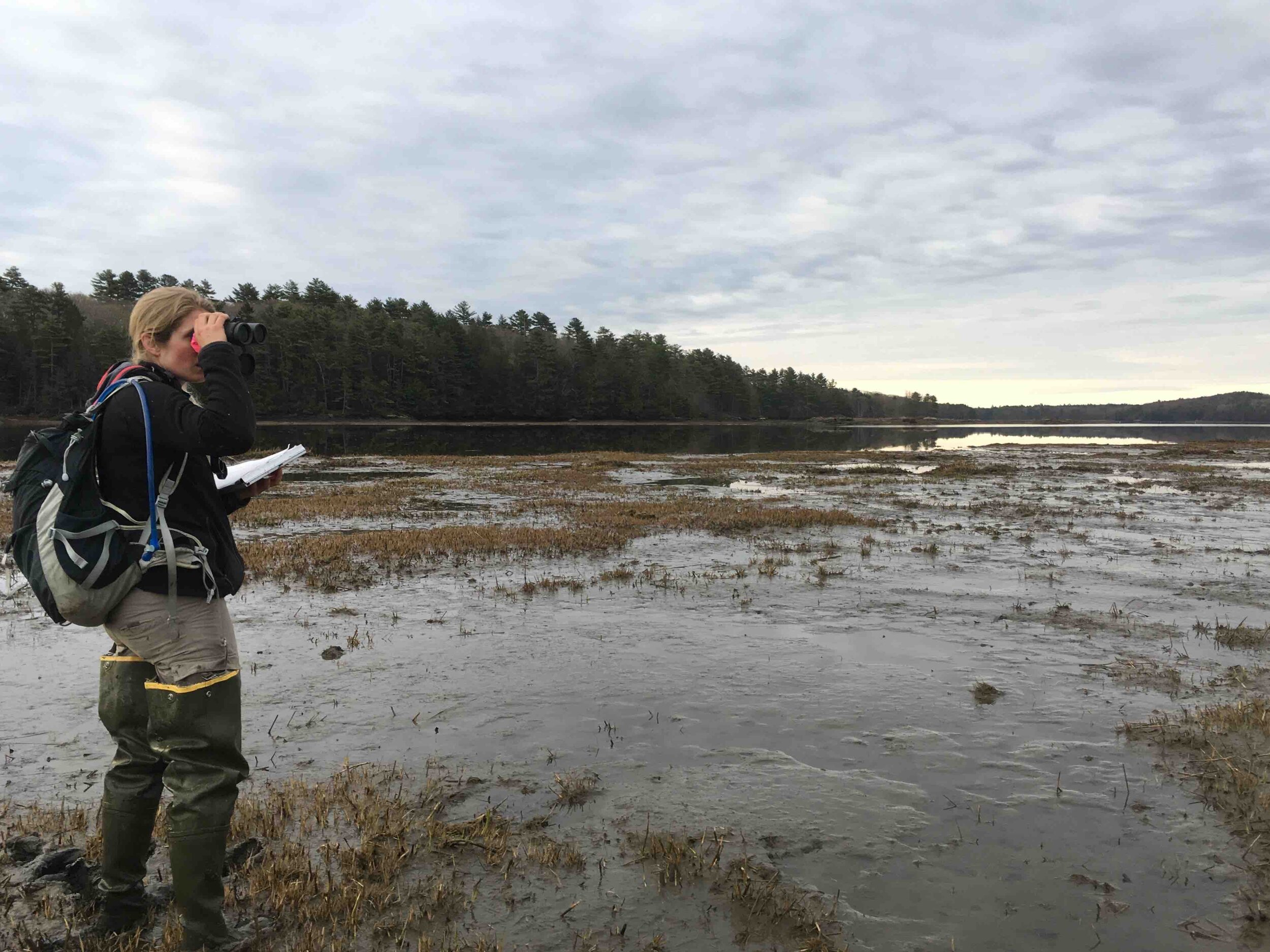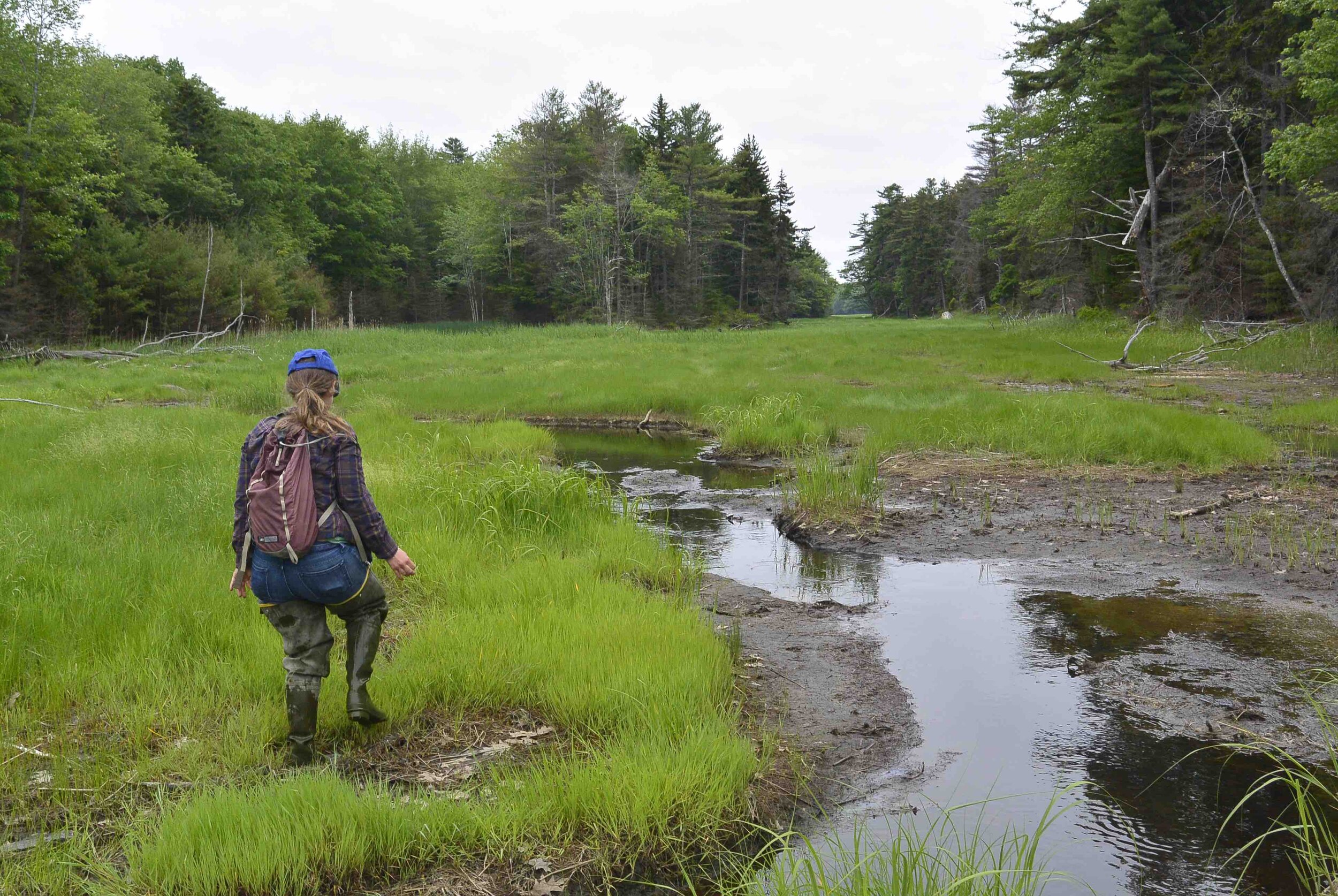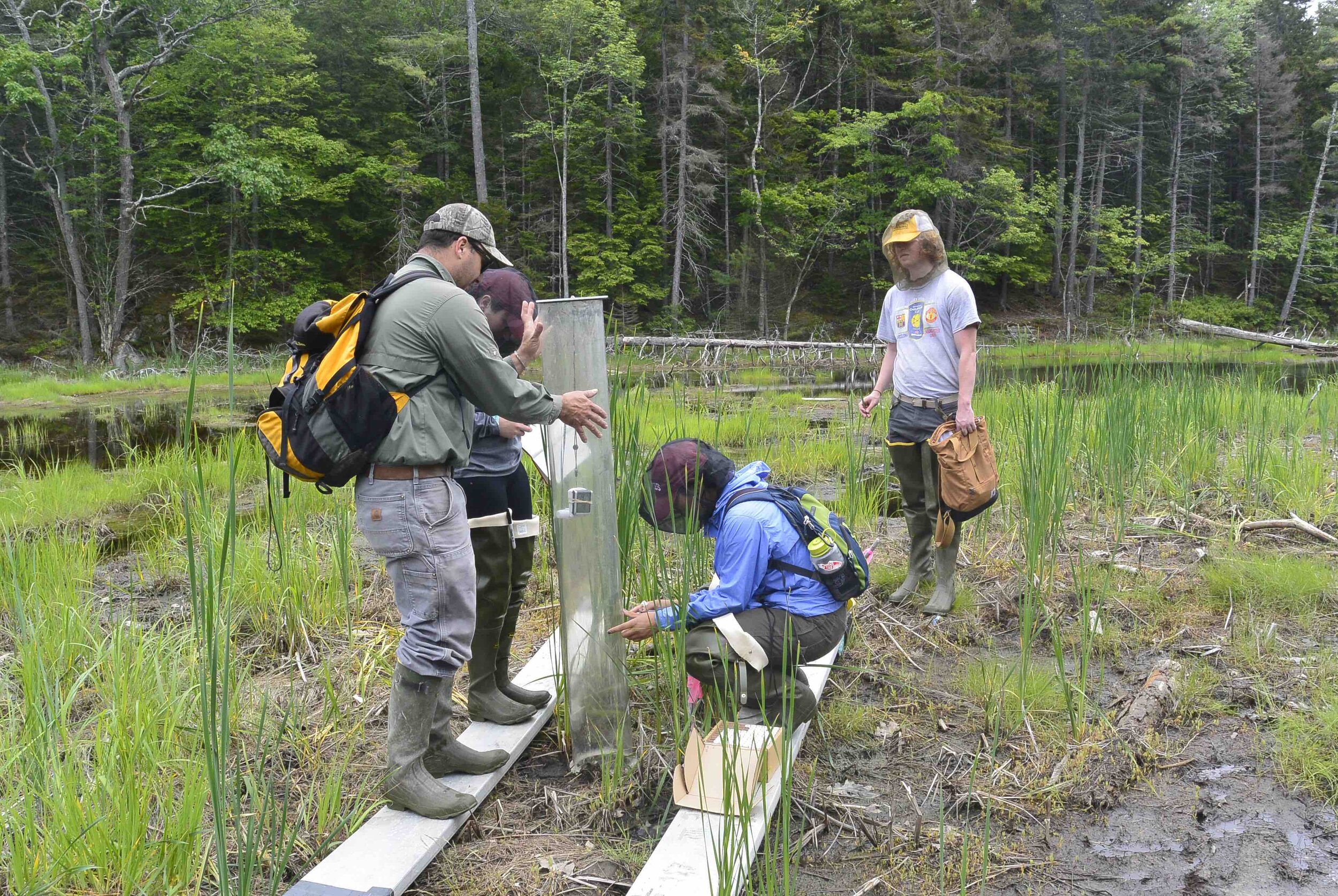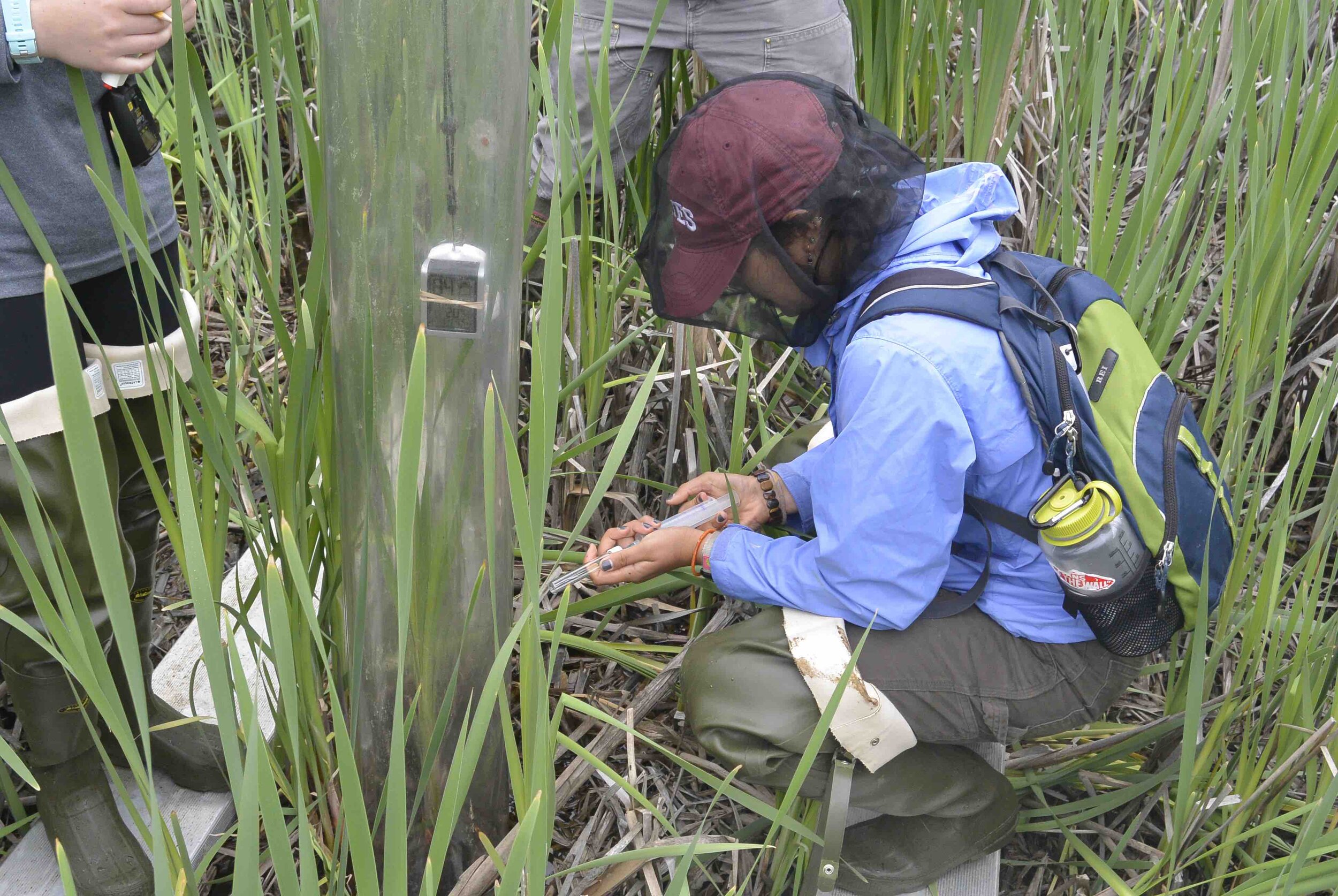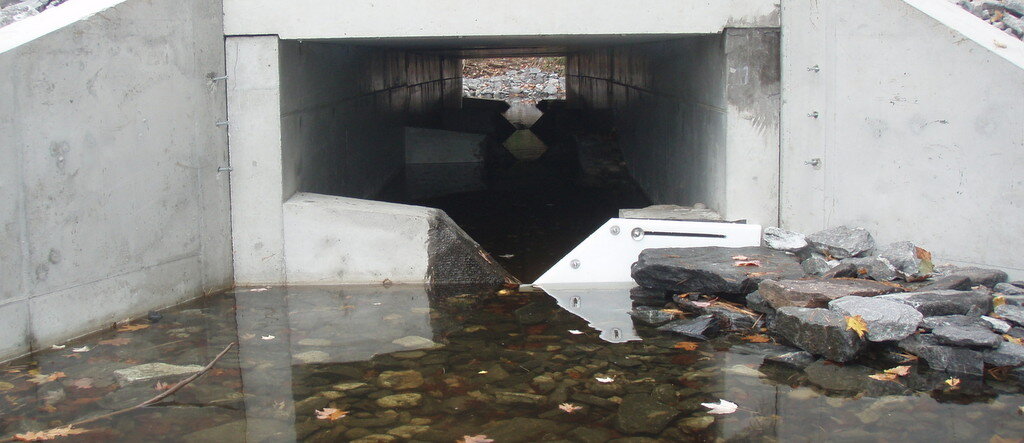2019 Restoration Program
Restoring the Lands and Waters of the Estuary
Back River Creek Project
This year, KELT started managing a feasibility study for a large restoration project at Back River Creek marsh in Woolwich. This marsh, which sits just north of the Taste of Maine, is in an unhealthy condition right now due to undersized culverts in Route 1 and George Wright Road that cause the marsh to stay constantly flooded.
This project is also a resilience project. We are working with the town of Woolwich, Maine DOT, Bath Water District, and others to identify how changes to the infrastructure that would improve the marsh can also help prevent the roads from flooding during high water events and protect the infrastructure. The next steps are working with engineers on modeling and preliminary designs. We will be sharing information about the findings and future options for the site in 2020.
Revisiting Past Projects:
Little River & “Cool Little Culvert”
This year, KELT also partnered to gather information about restoration success at two sites of previous restoration projects: the Little River Marsh and the Sewall Pond Culvert. Bates College students monitored methane emissions from the marsh at KELT’s Little River Preserve in Georgetown, where a tidal restriction was removed in 2018.
Members of the Arrowsic Conservation Commission finished their 5th year of monitoring how well the “Cool Little Culvert” managed to increase alewife access to Sewall Pond and decrease the amount of phosphorus in the lake. The project was a large success on both of these fronts. In the five years before restoration, the average number of fish entering was 5,092. Since the restoration, the average number of fish is almost four times higher: 19,813. The five-year average for phosphorus decreased from 25.6 before the culvert was installed to 23.6 after, and the members of the conservation commission measured their lowest phosphorus concentration ever in the spring of 2019.
Nequasset Fish Ladder Restoration
Nequasset Lake is the site of an historic alewife run. Alewives are a vital part of the foundation of the food chain in the Gulf of Maine. The fish that spawn at Nequasset Lake have supported a historic alewife fishery at the Nequasset Dam site for hundreds of years. The fish count and the fish ladder are both important for keeping this run healthy and sustainable.
In 2019, 90 volunteers helped us to count 5,073 fish at the Nequasset fish ladder for the annual alewife count. Based on these numbers, we are able to estimate that about 65,000 fish made it into the lake to spawn.
